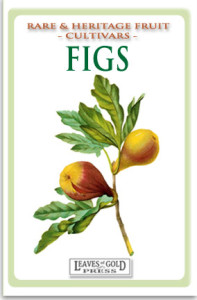 Fresh Figs: delicious and low-histamine
Fresh Figs: delicious and low-histamine
Figs are one of the fruits to be enjoyed on a low histamine diet.
There are hundreds of fig varieties, but only a few are usually found in farms and markets. Figs come in a range of colors from pale yellow, yellowish-green or brown to red or purple or even almost black. They may be striped or speckled, and their pulp varies widely in colour, too.
“The taste of a good fig, a tree-ripened, freshly-picked fig, is sublime. Many people these days have only ever tried figs bought from a supermarket, and finding the flavour and texture unpleasant, have believed thereafter that they don’t like figs. Do not judge figs on the frequently poor quality ones available commercially.
“A ripe, fresh fig should be tender and slightly soft. When you bite into it, a surge of silky, juicy, sweet, rich flavour fills your mouth. It is like jam eaten straight out of the jar, only infinitely more subtle and complex, with overtones of honey and flowers. When you look at the interior of the fruit from which you have taken a bite, you’ll see dense fringes of flowerlets lapped in a luscious, glistening syrup.”
Source: Figs: Rare and Heritage Fruit Cultivars #13
People who suffer from histamine intolerance should eat only fresh figs recently picked, or figs which have been frozen and recently defrosted in the refrigerator. (Dried figs are not part of the Strictly Low Histamine diet).
The National Center for Home Food Preservation at the University of Georgia and Pick Your Own advise on how to freeze fresh figs:
How to ‘Wet Freeze’ Figs
Freeze within 12 hours of picking time, if possible. Prepare and freeze figs only about 1 1/2 litres (3 pints) at one time. Then repeat the process until all figs are frozen.
- Make a medium sweetness syrup by mixing 3 cups sugar with 4 cups water. Simply stir the sugar into the water to dissolve. No heating is necessary.
- Optional step: To the sugar syrup, add an citric/ascorbic add mixture bought at the grocery store (for example, “Fruit Fresh”) and follow the directions on the package, generally adding about 1 teaspoon per batch. This helps preserve colour and flavour.
- Wash the figs. remove the stems and any soft spots. Slice the figs about 1/2 cm (¼-inch) thick.
- Pack the sliced figs into polyethylene containers, ziploc bags, or vacuum freezer bags, allowing room to add about 1/2 cup of sugar syrup, and allowing about 1/2 inch per pint expansion room. More room will be needed for larger containers. Pack the containers to force out as much air as possible since air dries out the figs when they freeze. Be sure to label and date containers.
- Place containers as quickly as possible into the coldest part of your freezer, allowing room around the containers to promote fast freezing. Containers can be packed more economically after they are frozen solid, usually 24 hours.
When you are ready to eat them, thaw the frozen figs in the refrigerator in the container.
How to ‘Dry Freeze’ Figs
To prevent darkening of light colored figs, dissolve 3/4 teaspoon (2250 mg) of ascorbic acid in 3 tablespoons cold water and sprinkle over 1 quart of fruit. Pack figs into containers, leaving some ‘headspace’.
These nutritious fruits (which are really flowers turned inside out) can be enjoyed in both sweet and savory recipes.
 Autumn Baked Figs
Autumn Baked Figs
 Autumn Baked Figs
Autumn Baked Figs
